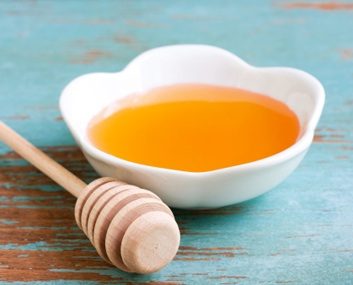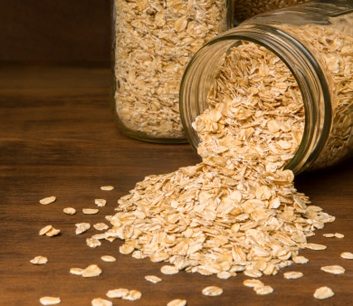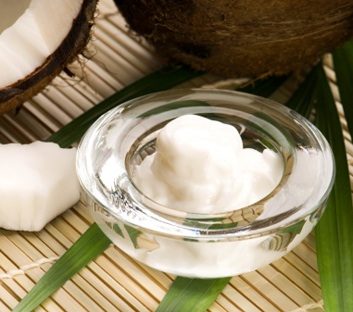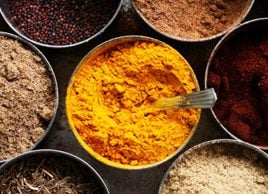
Acne: Manuka honey
Derived from a plant native to New Zealand and Australia, manuka honey is a thick and slightly bitter honey with powerful antibacterial properties. “The bacterium that causes acne, Propionibacterium acnes, is very sensitive to the anti-bacterial activity of manuka honey,” says Peter Molan, a professor in biological sciences at the University of Waikato in New Zealand. Molan, who has specialized in honey research for the past three decades, says research shows manuka “has a more potent anti-inflammatory activity than other types of honey.” He adds that its “unusual” antibacterial activity “can diffuse across skin and get down into the infection that is causing the acne spots.” Molan recommends soaking the pad of an adhesive dressing in the honey and placing this on a single pimple or a small area of pimples. For widespread acne, he recommends blending manuka honey with coconut oil (one third honey to two thirds coconut oil; for example, 1/3 tablespoon [5 mL] to 2/3 tablespoon [10 mL]), which makes for a healing skin cream. Manuka honey can be purchased at health food stores, and is typically more expensive than regular honey.

Rosacea: Oatmeal
Brimming with vitamins A and E, oatmeal is an anti-inflammatory powerhouse that can help calm irritated skin. It’s also packed with skin-soothing starches and beta-glucans. “They provide a protective barrier for the skin‚” says Shelley Burns, a Toronto-based naturopathic doctor. A 2006 study in the Journal of Drugs in Dermatology reported that “oatmeal works as a skin protectant and enhancer of barrier function.” Oatmeal that is featured in commercial redness-fighting beauty products is usually the colloidal variety (meaning it has been ground into an extremely fine powder). But you can use regular oatmeal for a homemade mask. Mix 3/4 cup (175 mL) of dry oatmeal with 1/3 cup (75 mL) of warm water to get a nice, thick paste, and then smooth it onto your face. The mask may not look pretty, but it should feel quite soothing. Once it dries, it will feel itchy – your cue to remove it by rinsing with cold water.

Eczema: Coconut Oil
The skin’s outer barrier can be likened to bricks and mortar, according to Markham, Ont., dermatologist Dr. Charles W. Lynde. With eczema, “the bricks are there but the mortar is porous,” he says. Lynde defines eczema as “an immunological abnormality of the barrier of the skin being deficient.” Skin affected by eczema is very dry, red and itchy. Restoring moisture is key, and coconut oil is an excellent moisturizer. “It’s sort of a shield on the epidermis to fill in the holes of that mortar,” says Lynde. While some moisturizers contain coconut oil, you can apply the oil – which can be purchased at health food stores or grocery stores – straight to skin using your fingertips, he says. You can also layer your regular moisturizer on top of coconut oil.

Hyperpigmentation: Turmeric
Darkened areas on the skin, called hyperpigmentation, can be a sign of internal inflammation, according to Gaetano Morello, a Vancouver naturopathic doctor. At the root is a biomarker called NF-kappaB, which is produced in the body, he says. “The more NF-kappaB in your system, the more inflammatory reactions you have.” Curcumin, the active ingredient in the spice turmeric, reduces NF-kappaB when taken orally. And a recent study cited in the Australian Journal of Herbal Medicine concluded that “curcumin has the potential to be used as a whitening agent in treating hyperpigmentation disorders.” In the study, consuming curcumin was found to significantly reduce the melanin content in melanin-producing skin cells. Although Morello says curcumin extracts are most effective (for instance, in the form of a capsule), he adds that “there is no question that consuming turmeric-and lots of it-daily has positive benefits” for those affected by hyperpigmentation.
Related:
• The unusual healing benefits of honey
• Natural homemade scrubs and masks
• Canadian skincare companies
